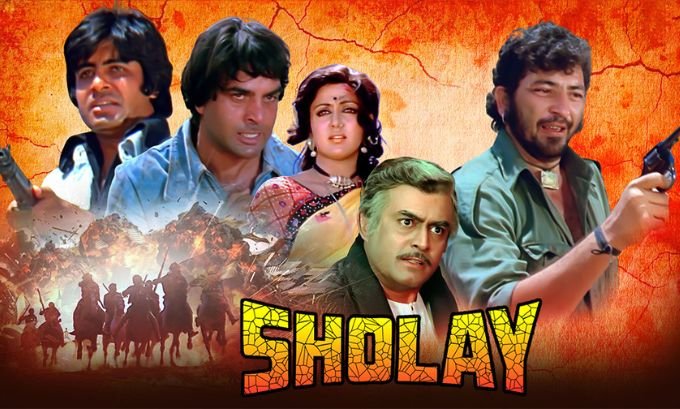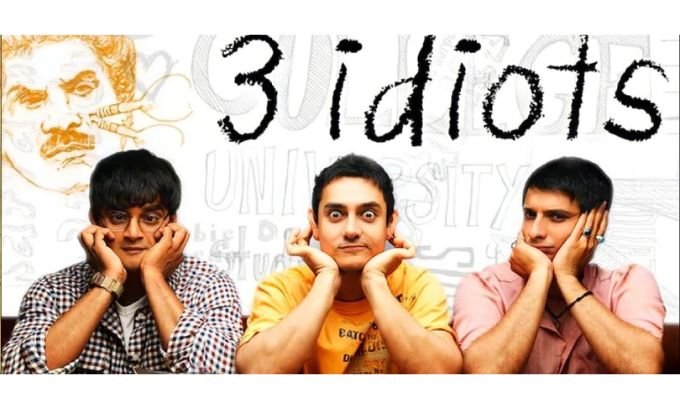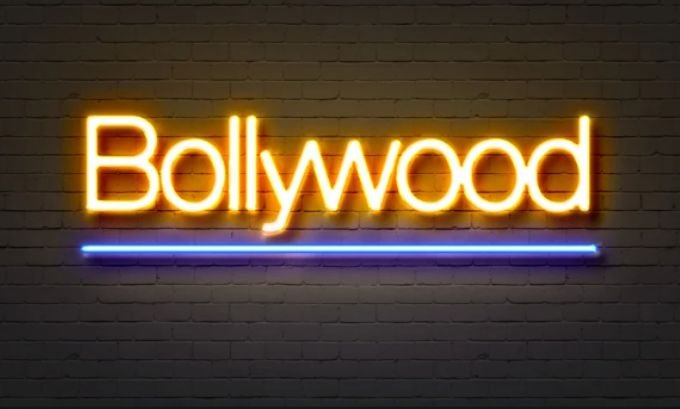Bollywood stands as one of the world’s largest film industries, producing over 1,000 movies annually and entertaining billions of viewers globally. From the golden era of the 1950s to contemporary masterpieces, Indian cinema has created films that transcend cultural boundaries and touch universal human emotions.
What makes a Bollywood movie truly great? The answer lies in a perfect blend of compelling storytelling, memorable performances, masterful direction, soul-stirring music, and lasting cultural impact. These elements combine to create films that don’t just entertain—they inspire, challenge, and transform audiences across generations.
This list celebrates ten cinematic gems that represent the very best of Bollywood. Each film has earned its place through artistic excellence, popular acclaim, and enduring influence on Indian culture and cinema worldwide.
Sholay (1975): The Ultimate Action Epic
Often called the greatest Bollywood movie ever made, Sholay revolutionized Indian cinema with its Western-inspired storytelling and unforgettable characters. The film follows two friends, Jai and Veeru, hired by a retired police officer to capture the ruthless dacoit Gabbar Singh.

Director Ramesh Sippy crafted an epic that perfectly balanced action, drama, romance, and comedy. Amitabh Bachchan and Dharmendra’s friendship became the gold standard for Bollywood bromances, while Amjad Khan’s portrayal of Gabbar Singh created one of cinema’s most iconic villains.
The film’s dialogues have become part of Indian popular culture, with lines like “Kitne aadmi the?” (How many men were there?) instantly recognizable decades later. Sholay proved that Indian cinema could create large-scale entertainers that resonated deeply with audiences.
Mughal-e-Azam (1960): Romance on a Grand Scale

K. Asif’s Mughal-e-Azam remains the pinnacle of historical romance in Indian cinema. This epic tale of Prince Salim’s forbidden love for court dancer Anarkali showcased unprecedented grandeur and production values.
The film took nearly 16 years to complete, with Asif’s perfectionist approach evident in every frame. Prithviraj Kapoor’s powerful portrayal of Emperor Akbar and Madhubala’s ethereal beauty as Anarkali created magic on screen. The movie’s elaborate sets, costumes, and the famous song “Pyar Kiya To Darna Kya” in the Sheesh Mahal remain cinematic landmarks.
Mughal-e-Azam demonstrated that Indian filmmakers could create spectacles rivaling Hollywood productions while maintaining distinctly Indian storytelling sensibilities.
Mother India (1957): A Portrait of Resilience
Mehboob Khan’s Mother India stands as a powerful allegory for the newly independent nation. The film follows Radha, a village woman who struggles to raise her sons and protect her community despite overwhelming hardships.
Nargis delivered a career-defining performance as the titular mother, embodying strength, sacrifice, and moral integrity. The film’s climax, where she chooses duty over maternal love, remains one of cinema’s most emotionally devastating moments.
Mother India became the first Indian film nominated for an Academy Award for Best Foreign Language Film, introducing international audiences to the depth and sophistication of Indian storytelling.

Dilwale Dulhania Le Jayenge (1995): The Romance Revolution
Aditya Chopra’s directorial debut redefined romantic cinema for a new generation. DDLJ tells the story of Raj and Simran, whose love story unfolds across London and Punjab, bridging traditional values with modern sensibilities.
Shah Rukh Khan and Kajol’s chemistry became legendary, with their performances creating characters that felt both aspirational and relatable. The film’s success lay in its ability to appeal to urban audiences while respecting traditional Indian family values.
Running continuously at Mumbai’s Maratha Mandir theater for over 25 years, DDLJ proved that well-crafted romantic dramas could achieve unprecedented longevity and cultural impact.
Lagaan (2001): Sports Drama as National Metaphor
Ashutosh Gowariker’s Lagaan transformed a simple cricket match into an epic tale of colonial resistance and human determination. Set in Victorian-era India, the film follows villagers who must win a cricket match against British officers to avoid paying oppressive taxes.
Aamir Khan’s passionate performance as Bhuvan anchored this ambitious period drama. The film’s three-and-a-half-hour runtime never felt excessive, thanks to masterful pacing and genuine emotional investment in the characters’ struggles.
Lagaan earned an Academy Award nomination and international critical acclaim, proving that Indian cinema could tackle serious subjects while maintaining commercial appeal.

3 Idiots (2009): Comedy with a Conscience
Rajkumar Hirani’s 3 Idiots used humor to address serious issues within India’s education system. The film follows three engineering students whose friendship and idealism challenge conventional notions of success and happiness.
Aamir Khan’s portrayal of Rancho became an inspiration for students across India, while the film’s message about pursuing passion over pressure resonated globally. The movie’s blend of comedy, drama, and social commentary created a template for meaningful commercial cinema.
3 Idiots became one of the highest-grossing Indian films at the time, proving that audiences craved entertainment with substance and social relevance.
Pakeezah (1972): Poetry in Motion
Kamal Amrohi’s Pakeezah stands as one of cinema’s most beautiful tragic romances. This story of a courtesan’s daughter struggling for respectability showcased exquisite artistry in every frame.
Meena Kumari’s final performance was nothing short of extraordinary, with the legendary actress bringing profound emotional depth to her role. The film’s stunning cinematography, elaborate sets, and haunting music created an almost dreamlike atmosphere.
Pakeezah represented the artistic pinnacle of the classical Bollywood era, demonstrating how technical excellence could serve powerful storytelling.
Guide (1965): Spiritual Journey Through Love
Based on R.K. Narayan’s novel, Vijay Anand’s Guide explored themes of love, ambition, and spiritual transformation through the character of Raju Guide. Dev Anand’s charismatic performance carried this complex narrative from romantic drama to spiritual allegory.
The film’s exploration of personal transformation and moral ambiguity was ahead of its time. Waheeda Rehman’s powerful supporting performance and S.D. Burman’s memorable music enhanced the story’s emotional impact.
Guide proved that Indian cinema could successfully adapt literary works while maintaining cinematic appeal and philosophical depth.

Gully Boy (2019): Urban Poetry Comes Alive
Zoya Akhtar’s Gully Boy brought contemporary urban struggles to the forefront through the lens of Mumbai’s street rap culture. Inspired by real-life rappers Divine and Naezy, the film follows Murad’s journey from slum resident to acclaimed artist.
Ranveer Singh’s intense performance captured the frustration and ambition of young urban India, while Alia Bhatt provided strong support as his determined girlfriend. The film’s authentic portrayal of class struggles and artistic expression resonated with younger audiences.
Gully Boy demonstrated that modern Bollywood could address contemporary social issues while celebrating India’s evolving cultural landscape.
Anand (1971): Celebrating Life Amidst Death
Hrishikesh Mukherjee’s Anand remains one of cinema’s most poignant celebrations of life and human spirit. The film follows the friendship between a terminally ill man and a serious doctor, exploring how joy can flourish even in life’s darkest moments.
Rajesh Khanna’s performance as Anand created an iconic character whose optimism and zest for life became inspirational. Amitabh Bachchan’s supporting role as the stoic doctor provided perfect contrast to Khanna’s exuberance.
Anand proved that simple stories, when told with genuine emotion and skilled craftsmanship, could create lasting cinematic impact.
Themes That Define Bollywood Excellence
These ten films represent the diverse themes that make Bollywood cinema so compelling. Patriotic fervor drives Mother India and Lagaan, showcasing the struggle for dignity and independence. Epic romances like DDLJ and Mughal-e-Azam celebrate love that transcends social barriers.
Social commentary appears in 3 Idiots and Gully Boy, demonstrating cinema’s power to address contemporary issues. Meanwhile, friendship and human drama anchor films like Sholay and Anand, proving that personal relationships remain universal storytelling foundations.
A Legacy That Continues to Inspire
These ten masterpieces have shaped not just Indian cinema but global perceptions of Bollywood’s artistic potential. They introduced legendary actors, established influential directors, and created musical compositions that remain popular decades after their release.
Each film contributed to Bollywood’s evolution while maintaining the industry’s core strengths: emotional storytelling, memorable characters, and the ability to blend entertainment with meaningful themes. They proved that Indian cinema could achieve both commercial success and critical acclaim on international stages.
From Mughal-e-Azam’s grand spectacle to Gully Boy’s contemporary authenticity, these movies demonstrate Bollywood’s remarkable range and enduring appeal. They continue inspiring new generations of filmmakers while entertaining audiences worldwide, cementing their status as true cinematic treasures that represent the heart and soul of Indian storytelling.


